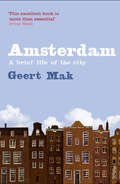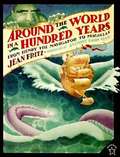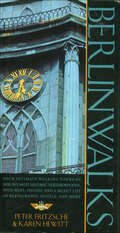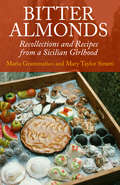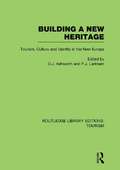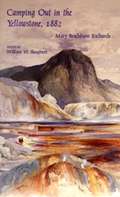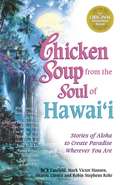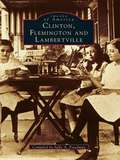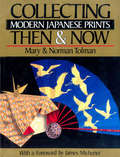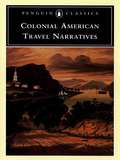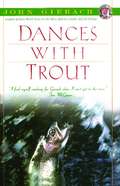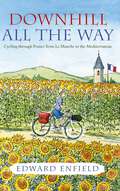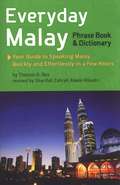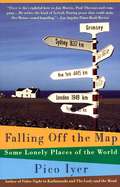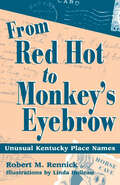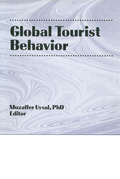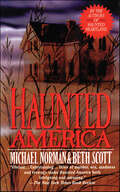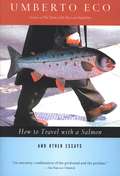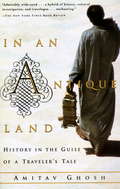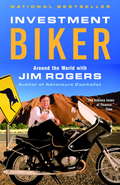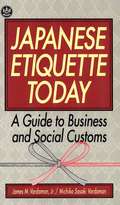- Table View
- List View
Amsterdam: A brief life of the city
by Geert MakA magnet for trade and travellers from all over the world, stylish, cosmopolitan Amsterdam is a city of dreams and nightmares, of grand civic architecture and legendary beauty, but also of civil wars, bloody religious purges, and the tragedy of Anne Frank. In this fascinating examination of the city's soul, part history, part travel guide, Geert Mak imaginatively recreates the lives of the early Amsterdammers, and traces Amsterdam's progress from waterlogged settlement to a major financial centre and thriving modern metropolis
Around The World In A Hundred Years: From Henry The Navigator To Magellan
by Jean Fritz Anthony B. VentiJean Fritz brings history to life once again in 10 true tales of 15th-century European explorers -- from Bartholomew Diaz and Christopher Columbus to Juan Ponce de Leon and Vasco Nu'ez de Balboa -- who changed the map and left behind stories of adventure too good to miss
Berlinwalks
by Peter Fritzsche Karen HewittBerlin is a city that visionary architects, city planners, social revolutionaries, and ruling kaisers have all tried to reshape. As a result, it is sheathed in layers of modern history, each providing a chapter in the city's story of constant change. Its rich atmosphere of energy made it the intellectual hub of early twentieth-century Europe: its lively theaters, cafes, and bawdy street life drew visitors from around the world. The four intimate walking tours in this book reveal Berlin's breathtaking history as a small medieval commercial town; as the capital of a nineteenth-century Prussia; as the modern dreamscape of the Weimar Republic; as the "new Rome" of the Third Reich; as a divided city, and now, as the capital of a reunited Germany. Readers will be taken through Merlin Mitte, site of the Brandenburger Tor and the dismantled Wall; past the old stones and new synogogues of the Jewish Quarter; among the working-class neighborhood of Prenzlauer Berg; and into the politically vibrant Kreuzberg. Berlinwalks also explores the city's cultural development through the creations of its artists, architects, and novelists, among them Bertolt Brecht, Christopher Isherwood, and Kathe Kollwitz. The book also features maps, more than forty black-and-white photographs, general advice and information, and a select list of restaurants, hotels, and shops. Like the other volumes in this series, Berlinwalks is written for people who want to learn when they travel, not just see.
Bitter Almonds
by Mary Taylor Simeti Maria GrammaticoAt the age of eleven, the daughter of a Sicilian sharecropper, Maria Grammatico, entered the San Carlo Institute in the mountaintop town of Erice, an orphanage run by nuns who were famous throughout Sicily for their almond pastries, but who were less adept at dealing with young girls. After ten years of hard work and harsh discipline, Maria emerged with the secrets of the nuns' pastries hidden inside her head. This is the story of her carefree country childhood--her Dickensian life in the orphanage with no heat, no running water, and only wood-burning ovens--and her triumphs as an entrepreneur and a world-famous pastry chef. Bitter Almonds includes 46 of the recipes that she 'stole' from the nuns, committed to writing for the first time in these pages.
Building A New Heritage: Tourism, Culture And Identity In The New Europe (Routledge Library Editions: Tourism)
by G. J. Ashworth P. J. LarkhamAt the heart of the European debate lies the tension between the idea of European unity and individual state identities and nationalisms. This volume provides an insight into this dichotomy by exploring the role of heritage in the new Europe. The main theme of this book is that a number of possible heritages can be shaped from the European past depending on the purposes for which they are intended. Through different methods of management intervention, heritage can fulfil a variety of functions, becoming a major commercial resource in the form of the tourism industry, or enlisted in the creation and maintenance of place identities. Leading contributors look at different perceptions of heritage by different cultures, and the social and political consequences of heritage planning. The nature of heritage planning for emerging, spatially fragmented state structures is also discussed.
Camping Out in the Yellowstone 1882
by Peter Wild Mary B. Richards William W. SlaughterCamping out in Yellowstone, 1882 describes the park at a time when Yellowstone was truly an "out-back and beyond" experience. Writing just five years after the army chased the Nez Peirce Indians through the area, and only ten years after the park's establishment, Mary Richards provides a vivid picture of the undeveloped and untouristed Yellowstone Park: Fire Hole Basin, Mammoth Hot Spring, Lower Falls, and the Excelsior Geyser, now defunct but mightier at the time than Old Faithful. Augmented by twenty-eight contemporary photographs, this book offers a fascinating perspective for present-day Park lovers.
Chicken Soup from the Soul of Hawai'i
by Jack Canfield Mark Victor Hansen Sharon Linnea Robin Stephens RohrAll over the world people have a word for paradise: Hawai'i. Now there's a book that captures that magical place for its millions of residents, the 7 million visitors who make a pilgrimage there each year, and the millions more who long to feel the magic of Hawai'i on cold winter mornings. While the Hawaiian landscape is unparalleled--sun-drenched beaches, wild waves, snow-capped peaks, cascading waterfalls, and dramatic volcanoes--the true spirit of Hawai'i lives in its people and their experiences. Now, the people of Hawai'i and those who love it share its special magic in this beautiful collection of stories. From celebrities including Bo Derek, Clint and Dina Eastwood, Don Ho, Regis and Joy Philbin, and Kelly Preston, to native storyteller Nalani Olds, activist and teacher Kanalu Young, and world-class surfers, athletes, hula masters, and master chefs, this book brings the gifts of Hawai'i to the world. Whether readers remember Hawai'i as the place where they fell in love or celebrated their honeymoon, the place they yearn to visit or the place they call home, this book exudes the aloha spirit with every turn of a page.
Clinton, Flemington, and Lambertville (Images of America)
by Sally A. FreedmanLife among the rolling hills of northwest New Jersey and in the three small towns that became centers of that area's population has been faithfully recorded by residents since the Civil War, capturing the rural character of their landscape. The rich heritage of descendants of English, Dutch, and German settlers in the Hunderton County population centers of Clinton, Flemington, and Lambertville is presented here.
Collecting Modern Japanese Prints
by James A. Michener Norman Tolman Mary TolmanThis book contains several bodies of information. An introductory essay puts Japanese prints into historical perspective and gives a brief outline of techniques. The second section, "Then," illustrated with prints by the older masters of the twentieth century, seeks to describe how we went about putting together our collection. There should not be many surprises here since these artists, many in their seventies, eighties, and nineties, will be known andeasily recognized by anyone who has even a minor interest in modern Japanese prints. These artists have been written about at great length elsewhere, though not perhaps from our unique viewpoint as collectors and dealers.The following section, "Between Then and Now," is a lengthy essay meant to be amusing. In this book about collecting, this essay gives a play-by-play description of a collector and his determined search for a specific print. It was not intended to be the ultimate in name-dropping, but was included to indicate the esteem and admiration that Japanese prints command abroad.The last section, "Now," using fifty artists with fifty illustrations to explain specific points about print collecting, gives not only objective facts about each artist and his work but also includes anecdotes that may help a collector better recognize and remember them. Some of these artists have already been briefly mentioned in the "Then" section. We wish to state that not all of the artists talked about are artists whom we handle in our gallery; we also hasten to point out that ail of the artists whom we do carry are, of course,included here. We have presented all of the prints in full color, in as large aformat as possible, so that the art lover can savor the details of each work.
Colonial American Travel Narratives
by Various Wendy Martin Susan ImbaratoFour journeys by early Americans Mary Rowlandson, Sarah Kemble Knight, William Byrd II, and Dr. Alexander Hamilton recount the vivid physical and psychological challenges of colonial life. Essential primary texts in the study of early American cultural life, they are now conveniently collected in a single volume.
Dances with Trout
by John GierachWith the wry humor and wit that have become his trademark, John Gierach writes about his travels in search of good fishing and even better fish stories. In this new collection of essays on fishing -- and hunting -- Gierach discusses fishing for trout in Alaska, for salmon in Scotland and for almost anything in Texas. He offers his perceptive observations on the subject of ice-fishing, getting lost, fishing at night, tournaments and the fine art of tying flies. Gierach also shares his hunting technique, which involves reading a good book and looking up occasionally to see if any deer have wandered by. Always entertaining, often irreverent and illuminating, Gierach invites readers into his enviable way of life, and effortlessly sweeps them along.
David's Revenge
by Anthea Bell Hans Werner KettenbachA taut psychological thriller about a visitor from war-torn Georgia who brings paranoia to a peaceful family.
Downhill all the Way: From La Manche to the Mediterranean by Bike
by Edward EnfieldFed up with questions about what he was going to do when he retired, Edward decided to get on his bicycle and ride from Le Havre to the Mediterranean. Armed with a tent and a smattering of French, he struggled in Normandy to get directions from old men tipsy on Calvados by 9 a.m., and hit his stride on the towpath of the Burgundy canal.
Downhill all the Way: From La Manche to the Mediterranean by Bike
by Edward EnfieldFed up with questions about what he was going to do when he retired, Edward decided to get on his bicycle and ride from Le Havre to the Mediterranean. Armed with a tent and a smattering of French, he struggled in Normandy to get directions from old men tipsy on Calvados by 9 a.m., and hit his stride on the towpath of the Burgundy canal.
Everyday Malay
by Thomas G. Oey Sharifah Zahrah Alwee AlkadriThis is a travel sized and easy-to-use Malay phrasebook, dictionary, and beginning Malay language bookBahasa Malaysia (literally "the Malaysian langauge") is based on Malay which is the mother tongue of the Malays of the Peninsula and the people of central eastern Sumatra. Malay has been the lingua franca of Southeast Asia for centuries. The lessons in this book are prioritized, with more important words and phrases being give first, so that you may profit no matter how deeply into the book you go. By studying the first section only, you acquire a basic "survival" Bahasa Malaysia, and by mastering the first three sections you should be able to get around quite well on your own. Everyday Malay includes:Over 2,000 of the most commonly used Malaysian words and phrasesA useful and concise Malay dictionaryExtensive notes on grammar and the Malay langaugeCultural dos and dont's that will make your visit go smoothlyKnowing a few simple phrases of Malay opens up an entirely new and more fulfilling travel experience. Malaysians love it if you can communicate in their language, and in only a few short hours this book allows you to do just that!
Falling Off The Map: Some Lonely Places of the World (Vintage Departures Ser.)
by Pico IyerThe author of Video Night in Kathmandu ups the ante on himself in this sublimely evocative and acerbically funny tour through the world's loneliest and most eccentric places. From Iceland to Bhutan to Argentina, Iyer remains both uncannily observant and hilarious.
Fingers Pointing Toward the Sacred: a Twentieth Century Pilgrimage on the Eastern and Western Way
by Frederick FranckTake part in a fascinating spiritual travelogue around the world with renowned artist, sculptor, and author Frederick Franck as he visits Sri Lanka, India, the Himalayas, and Japan. Along the way he relates events of the journey to memories of his life, tying past and present together with a series of flashbacks that add depth and richness to the narrative. Sit in on intimate, probing conversations with the twentieth century giants of faith he has met: Pope John XXIII, the Dalai Lama, Albert Schweitzer, D.T. Suzuki, and many others. In his quest for a spirituality which can be found at the heart of all religions, he moves beyond theological rhetoric to explore the deep spiritual resonances between Buddha-Nature and Christ-Consciousness. This book is the culmination of wisdom from a lifelong internal and external pilgrimage by the author of the classic book, The Zen of Seeing. Including charming drawings which Franck sketched along the way, this is a "road story" in the tradition of the ancient legends of heroes on the path of self-discovery. For all twentieth century pilgrims, Franck's fingers truly do point toward the Sacred.
Five Years on a Rock
by Milton MurayamaMilton Murayama returns to the places and people of his earlier fiction--to the sugar plantation company towns and sleepy villages of Maui, and to the resilient Oyama family. Five Years on a Rock is the story of Sawa Oyama, the mother who plays a major role in All I Asking for Is My Body. In a spirited voice full of courage and wit, Sawa tells of her arrival in Hawaii in 1915 as a seventeen-year-old picture bride. But her hope of returning to Japan after "five years on a rock" wanes as the five years stretch to twenty, during which six children are born, her husband's fishing business succeeds then fails, and the family debt grows. Overworked and sick with worry, Sawa loses all her teeth and falls deathly ill, the victim, she believes, of someone else's bachi (divine retribution). She recovers, however, when an aunt dies in her stead, and she returns to her family with renewed vigor and a new set of teeth.
From Red Hot to Monkey's Eyebrow: Unusual Kentucky Place Names
by Robert M. RennickYou can find Paradise in Kentucky—along with many other quirky place names, and the truth (and tall tales) behind them . . .Encountering some of the uncommon geographical names in the Commonwealth of Kentucky for the first time, visitors and residents alike often assume that some clever or funny stories lie behind them. So they ask, how did Elkhorn Creek get its name? Were the roads to Red River really Hell each way? Did bugs really tussle in Monroe County? Why was everyone whooping for Larry?To be hospitable and helpful, Kentuckians have come up with convincing?if not always truthful?answers to these and other questions about how places got their names. Some of these stories were clearly not intended to be believed, though a few of them have been anyway. From Red Hot to Monkey’s Eyebrow presents some of the classic accounts of Kentucky’s oddest place names. Complete with map, index, and humorous drawings by Linda Boileau, this handy guide is a geography lover’s delight.
Global Tourist Behavior
by Muzaffer Uysal Erdener KaynakGlobal Tourist Behavior contains travel and marketing research that explores the integral global nature of tourism. The globalization of tourism has resulted in more culturally diverse travelers with different preferences, motivations, expectations, and needs, while at the same time worldwide movements toward democracy have made some locations more accessible than ever before. New diversity in global tourist behavior and the reciprocal interaction between travelers and destinations will pose new challenges and create new opportunities for tourism professionals. Global Tourist Behavior helps readers meet these challenges by providing unique and invaluable new research on global travel behavior as an integral component of travel and tourism marketing research. It features original, empirical research by tourism scholars representing a variety of locations worldwide, including North America, the Caribbean, Eastern Europe, Germany, Indonesia, Korea, the Netherlands, the United Kingdom, and Zambia. The geographically diverse chapters in Global Tourist Behavior present research on: marketing places to tourists tourists’knowledge of culture issues in cross-cultural tourism tourism channels and distribution systems international tourism and marketing expert systems in tourism marketing management the impact of mega events health tourism. Tourism promoters, decisionmakers, and students will find the information on international travelers’preferences, expectations, motivations, images, attitudes, and choices of tour packages extremely helpful. The book can also be used as a guide for attracting international tourist business and developing appropriate marketing and management strategies for specific destinations.
Haunted America
by Michael Norman Beth ScottHaunted America takes you on a grand tour of ghostly hauntings through the U.S. and Canada, sweeping from terrifying battle-field specters at Little Bighorn to a vaudeville palace in Tampa, from ghostly apparitions in President Garfield's home in Ohio to the White House in Washington, DC.At the Publisher's request, this title is being sold without Digital Rights Management Software (DRM) applied.
How to Travel with a Salmon: And Other Essays
by Umberto Eco&“Impishly witty and ingeniously irreverent&” essays on topics from cell phones to librarians, by the author of The Name of the Rose and Foucault&’s Pendulum (The Atlantic Monthly). A cosmopolitan curmudgeon the Los Angeles Times called &“the Andy Rooney of academia&”—known for both nonfiction and novels that have become blockbuster New York Times bestsellers—Umberto Eco takes readers on &“a delightful romp through the absurdities of modern life&” (Publishers Weekly) as he journeys around the world and into his own wildly adventurous mind. From the mundane details of getting around on Amtrak or in the back of a cab, to reflections on computer jargon and soccer fans, to more important issues like the effects of mass media and consumer civilization—not to mention the challenges of trying to refrigerate an expensive piece of fish at an English hotel—this renowned writer, semiotician, and philosopher provides &“an uncanny combination of the profound and the profane&” (San Francisco Chronicle). &“Eco entertains with his clever reflections and with his unique persona.&” —Kirkus Reviews Translated from the Italian by William Weaver
In an Antique Land: History in the Guise of a Traveler's Tale (Vintage Departures)
by Amitav GhoshOnce upon a time an Indian writer named Amitav Ghosh set out an Indian slave, name unknown, who some seven hundred years before had traveled to the Middle East. The journey took him to a small village in Egypt, where medieval customs coexist with twentieth-century desires and discontents. But even as Ghosh sought to re-create the life of his Indian predecessor, he found himself immersed in those of his modern Egyptian neighbors. Combining shrewd observations with painstaking historical research, Ghosh serves up skeptics and holy men, merchants and sorcerers. Some of these figures are real, some only imagined, but all emerge as vividly as the characters in a great novel. In an Antique Land is an inspired work that transcends genres as deftly as it does eras, weaving an entrancing and intoxicating spell.
Investment Biker
by Jim RogersLegendary investor Jim Rogers gives us his view of the world on a twenty-two-month, fifty-two-country motorcycle odyssey in his bestselling business/adventure book, Investment Biker, which has already sold more than 200,000 copies. Before you invest another dollar anywhere in the world (including the United States), read this book by the man Time magazine calls "the Indiana Jones of finance." Jim Rogers became a Wall Street legend when he co-founded the Quantum Fund. Investment Biker is the fascinating story of Rogers's global motorcycle journey/investing trip, with hardheaded advice on the current state and future direction of international economies that will guide and inspire investors interested in foreign markets.NOTE: This edition does not include a photo insert.
Japanese Etiquette Today
by Michiko Sasaki Vardaman James M. VardamanJapan today "looks" more and more Western, principles governing social and business relations become harder to see. Most foreigners know that Japanese etiquette differs from that of other countries, but few people know the extent of the differences. It is this diversity that first attracted the authors of Japanese Etiquette Today, a book written to make working and living in Japan enjoyable and rewarding experiences.The authors look at a variety of formal and informal occasions governed by subtle rules-visiting a Japanese office and h ome, giving and returning gifts, attending weddings and funerals, and much more. The result is an informal overview of Japanese society and a manual of practical advice on getting a long in that society. Complete with essential vocabulary and phrases, this handy guidebook explains what to do and perhaps more important what not to do, what to say, what to wear, indeed, whatever you need to observe the complex rules of modern Japanese etiquette.
